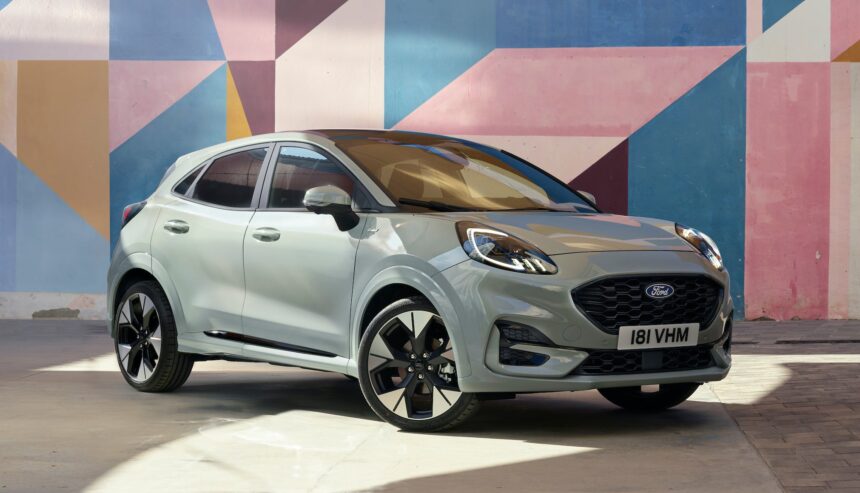Ford of Europe and Ford of Britain are continuing to make waves in the automotive industry, despite a slight decline in sales. The days of offering a wide range of cars from small to large sizes, along with multiple MPVs and SUVs, are long gone. However, Ford is still making its mark with popular models like the Puma, which has recently been updated and is set to be joined by an electric variant called Gen-e.
The Ford Puma, a Fiesta-sized and based crossover, is currently attracting a lot of buyers in its revised 2025 form. The main external changes include a new front end, fresh colors, and wheel designs. The 1.5-liter petrol engine with 200 PS has been discontinued, and now three 1.0-liter turbocharged three-cylinder mild hybrid options are available with power outputs ranging from 125 PS to 160 PS. The dynamic performance of the Puma remains best-in-class, making it a popular choice among consumers.
Inside the car, some physical controls have been removed and functions have been placed on a larger screen, which may not be favored by everyone. Ford describes the new dashboard as a “sports car-style cockpit” that wraps around the occupants with screens mounted high and angled towards the driver, creating a calm environment with minimal physical buttons.
Despite the changes, the Puma remains spacious and roomy, with the ability to comfortably seat five occupants. The unique 80-liter ‘MegaBox’ below the boot floor adds to the practicality of the vehicle, offering additional storage space for various items. The total boot volume is 456 liters, providing ample space for luggage and other belongings.
While the Puma with a petrol engine is impressive, the upcoming Gen-e electric variant is expected to offer a different driving experience. With an increase in weight to 1,553 kilograms, the Gen-e may provide a new level of performance and efficiency. Ford of Europe’s commitment to engineering vehicles to exceed customer expectations may make the Gen-e a standout in its segment.
Overall, the Ford Puma continues to be a popular choice for consumers, offering a blend of performance, practicality, and style. With the introduction of the Gen-e electric variant and potential future updates, the Puma is set to remain a strong contender in the crossover market for years to come. The Ford Puma has undergone some changes, with the removal of paddle shifters and a few other cost-cutting measures. Despite these alterations, the vehicle remains a popular choice for city driving, thanks to its compact size and improved appearance post-facelift. Former Fiesta owners are likely to find the Puma appealing due to its extra space and ease of entry and exit.
One of the key selling points of the Puma is its fuel efficiency and low CO2 emissions, especially with the introduction of a 48-volt mild hybrid system across all variants. The three-cylinder engine can even run on just two cylinders under certain conditions, providing a boost of torque when needed. In a test drive, the Puma achieved an impressive average of 53 mpg, surpassing the official WLTP figure.
Manufactured in Romania, all Pumas come equipped with a seven-speed DCT transmission, with the option of a six-speed manual for the base engine. The electric version, known as the Gen-e, offers two trim levels – Select and Premium. With a single-ratio setup, the Gen-e distinguishes itself from the ICE variants through its lack of tailpipes and body-colored plastic panel.
In a crowded B-SUV class, the Ford Puma continues to stand out as a top contender, alongside the VW T-Cross. The range starts at GBP26,350, with the Gen-e priced at GBP29,995. The as-tested 155 PS ST-Line X with a seven-speed DCT transmission costs from GBP31,350 before options.
Overall, the Ford Puma remains a reliable and efficient choice for urban driving, with its compact size, improved fuel economy, and stylish design setting it apart in the competitive SUV market.





